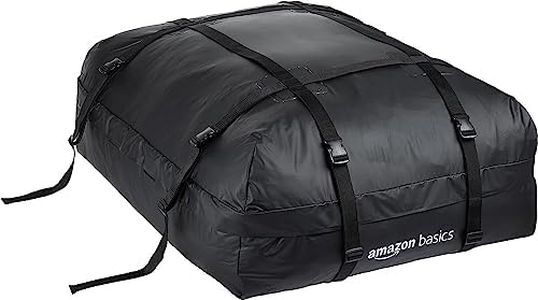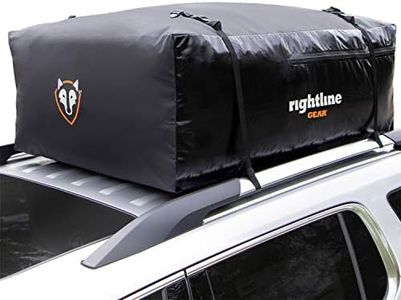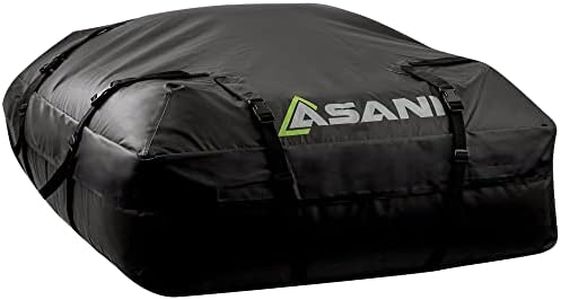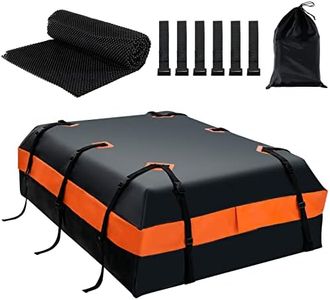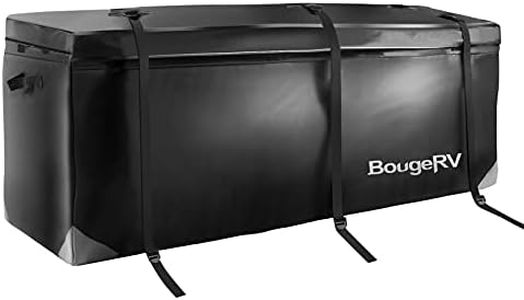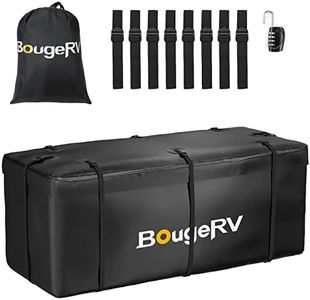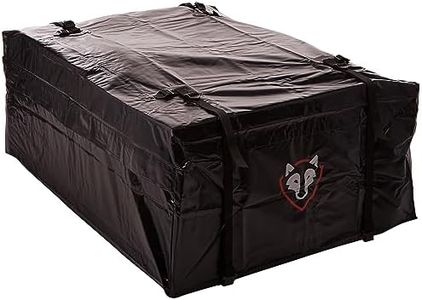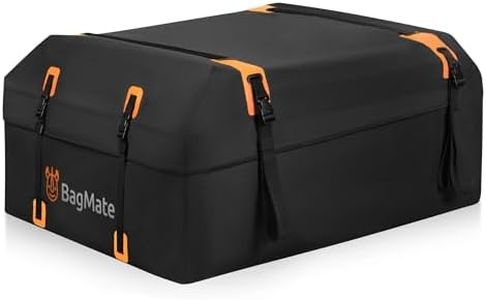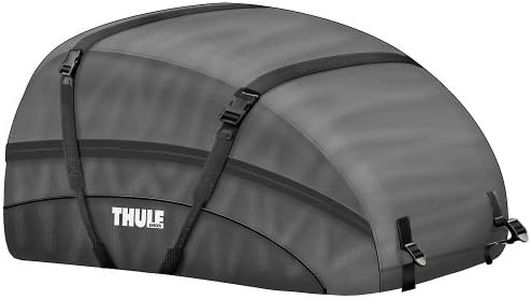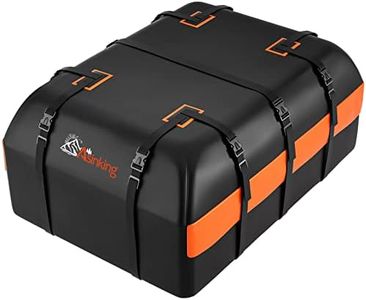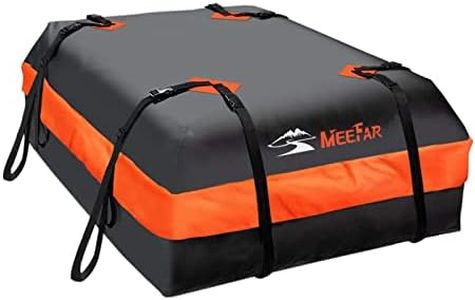We Use CookiesWe use cookies to enhance the security, performance,
functionality and for analytical and promotional activities. By continuing to browse this site you
are agreeing to our privacy policy
10 Best Soft Cargo Carriers
From leading brands and best sellers available on the web.Buying Guide for the Best Soft Cargo Carriers
Choosing a soft cargo carrier for your car is a great way to expand your vehicle’s storage capacity, whether you’re heading out on a road trip, camping adventure, or just need extra room for luggage. To pick the right carrier, it's important to focus on practical aspects like how much space you need, how easy it is to mount and secure, and whether it will fit your car—especially if you don't have a roof rack. Understanding the key specifications will help you decide which carrier will serve you best, ensuring your belongings are transported safely and conveniently.Capacity (Volume)Capacity refers to how much the cargo carrier can hold, usually measured in cubic feet. This is important because it determines how many items or bags you can transport at once. Carriers typically range from small (10-12 cubic feet) for a few bags, to large (18-20+ cubic feet) for full family trips. If you regularly carry lots of gear or travel with multiple people, a larger carrier makes sense. On the other hand, if you need it only occasionally or for lighter loads, a smaller model may be more manageable and fuel-efficient.
Mounting SystemThe mounting system describes how the carrier attaches to your vehicle. Some carriers are designed to work with existing roof racks, while others can be mounted directly to the roof using straps through the car doors. It's important because the wrong mounting type could make installation difficult or even damage your vehicle. If your car already has crossbars or a roof rack, a carrier that requires these will work well. If not, look for carriers made for bare roofs. Always double-check that the mounting method is compatible with your car before buying.
Material and DurabilityMaterial and durability determine how well the carrier protects your belongings from weather and wear. Most soft cargo carriers use heavy-duty polyester or PVC fabrics with waterproof coatings. High-end carriers offer thicker materials and better-sealed seams. For regular or long-distance travel, it's wise to choose a very durable and waterproof material. If you’ll only use it occasionally in good weather, lighter materials may suffice.
Water ResistanceWater resistance indicates how well the cargo carrier can keep out rain or snow to protect your gear from getting wet. Some carriers are fully waterproof with sealed zippers and welded seams, while others are just water-resistant and may leak during heavy rain. If you expect to drive in wet conditions or want peace of mind, prioritize a waterproof model. If you’ll only use the carrier during dry weather, this might be less of a priority.
Ease of InstallationEase of installation covers how quickly and easily you can set up and remove the cargo carrier. Some are designed to be mounted by one person in a few minutes, while others may require multiple people or tools. If you’ll need to put the carrier on and take it off frequently, look for options with simple, tool-free installation. If possible, test installation before you travel to ensure you’re comfortable with the process.
Security FeaturesSecurity features include lockable zippers and attachment straps that help prevent theft or the carrier shifting during travel. This is particularly important if you’ll leave your car unattended or will be driving at high speeds. If security is a priority—such as when parking overnight or carrying valuable items—choose a carrier with built-in locking mechanisms or invest in additional locks.
Storage When Not in UseHow the cargo carrier stores when not in use can make a big difference, especially if you have little storage space at home. Some carriers fold down into a compact bag, while others are bulkier. If space at home is tight or you need to carry the carrier in your vehicle when not in use, opt for a model that folds down small.
